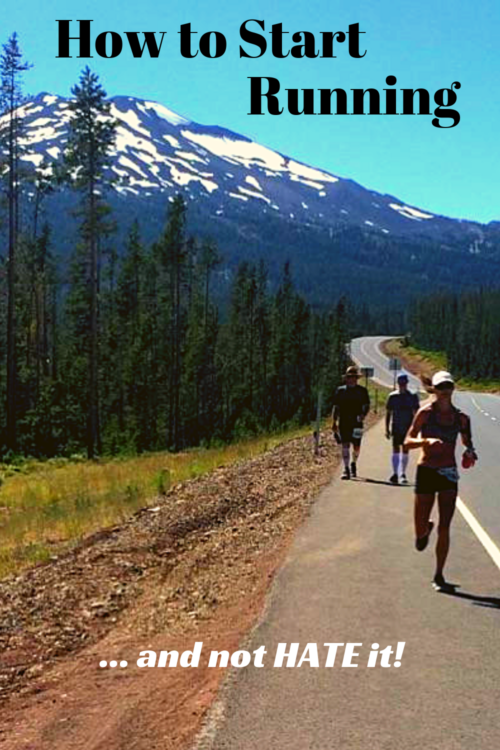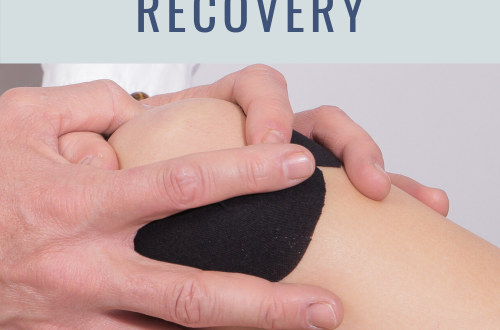
How to Start Running … and not hate it
Oh how I love running! Let me count the ways:
- Little/no equipment needed.
- No gym membership required.
- No driving necessary.
- I choose the duration and intensity.
- I can do it alone or with others
… the list goes on and on.
Whether running is new to you or you’re returning to the sport after taking a break, there can be some anxiety in starting this exercise. But don’t sweat it! (pun) Running is something that almost anyone, at any age or fitness level, can start and enjoy. I’ve been doing it for 25 years …
Get Started in less than 1 hour per week
If you have 5 – 10 minutes, a pair of shoes, and a stretch of sidewalk or road, you have everything you need to start a running program. (Did I mention that “low barrier to entry” is one of my favorite things about running?)
- Realistically, you’ll want to set aside time – 20 minutes if you’re just getting started – a few times a week.
- I recommend early morning runs – you’re more likely to do it, and you’ll feel energized all day.
- Don’t worry about speed, or even running the whole time. Set your watch (or whatever timing mechanism you use) and put one foot in front of the other – running, run-walk, whatever – for your chosen duration (eg, 20 minutes).
Equipment needed
Running shoes are the big one. Sure, you can run in any pair of shoes you own, but who wants to run in leather loafers or high heels? I joke, but running shoes are made for just that and having a decent pair will increase your enjoyment reduce risk of injury. Buy these shoes from a specialty running store, if possible – the staff there are typically knowledgeable and able to steer you into a shoe that will serve your feet well. They will watch you run, assess your experience and goals, and recommend several pairs for you to try on (and run around the store in). Expect to spend around $100 – this is the biggest single financial investment you need to make for running.
Sports bra. Ladies, you already know this – a good sports bra is necessary and sometimes hard to find. If you’re buying running shoes, that specialty running store will likely have something for you in the sports bra category. Running bras can be pricey. If you are small-busted like I am, go to Target or TJ Maxx and spend $20 or so on something that provides support, thwarts the headlights, and doesn’t chafe.
Will there be pain?
If you’re brand new to running, there will be some (what I call) sweet discomfort. For example, you will likely breath harder, your leg muscles might get sore, you may get a side stitch.
- These discomforts are temporary, and, when you experience them, it means that your body is adapting to the new stress put upon it.
- In other words, your body is getting stronger: Your lungs are getting better at exchanging and delivering oxygen. Your muscle fibers are being broken down and rebuilt to withstand more.
Training Guidelines
Speed
- When getting started, think time, not pace. When starting a running practice, DO NOT worry about the sped, or pace. The goal at first is to just go out and do it (jog, walk-jog, put one foot in front of the other) for the time you choose. So, set a timer – on your watch, phone, carry an egg timer if that what you have – and go do it!
Treadmill or outside
- Outside is the best -side! If at all possible, I recommend running outside –
- It’s less boring. The scenery changes, and you actually go somewhere. In fact, when I’m traveling, I love doing runs in a new place (with a map of course) as a way to see the area and familiarize myself with it.
- Fresh air is good for the mind and body.
- You will likely feel more connected to the community and neighborhood around you.
- Treadmills are great tools for:
- Bad weather. If it’s raining sideways or well below zero and your running route is an ice rink, the treadmill provides a safe, warm running surface.
- Unsafe areas. When the neighborhood is sketchy or the only roads are sidewalkless freeways, hit the ‘mill and smile knowing that your safe and sound.
- Stay-at-home moms/dads. If you have babies and/or toddlers, having a treadmill at home is a great enabler. When our kids were very young, I did almost all my runs on our treadmill at home, usually while they were asleep, but sometimes while they were in a bouncy chair or playing nearby.
- Gym use. If you belong to a gym or travel a lot and have access to hotel fitness centers, using the treadmills is an easy and effective way to get a good run in – go for it!
Hills are hard
Gravity is unforgiving – but they will make you stronger. If you don’t have any pre-existing joint conditions that would prevent you from running hills, I say go for it. Here are some guidelines:
- There is no shame in walking up or down a hill if you are winded or have joint pain.
- Running uphill: shorten your stride, slow your pace. I focus on maintaining a jog, no matter how short the stride or slow I am.
- Running downhill: Land on the ball of your foot and focus on following through with each stride, rather than putting the brakes on or pounding your foot down on the ground. The objective here is to minimize jarring the joint on your striking foot. My mantra is “roll with it” – I like letting gravity carry me down the hill, letting my feet simply accommodate (not counteract) the propulsion forward.
Eating and running
- Happy gut, happy run. This is a bit of trial-and-error for each of us, but in general:
- Give yourself 60-90 minutes after eating a meal before going on a run. Grabbing a banana or a few nuts before heading out the door should not upset your stomach. Eating a burger just before a 10-miler is a recipe for indigestion in any number of ways.
- Bathroom basics
- You know your poop cycle. Plan around it, go before you run, or know how you will take care of business during the run.
- Pee before you go.
- Don’t overthink fueling
- General rule: No need to carry water/energy drink/gel/food unless your running >90 minutes, you’re really dehydrated, or it’s hot outside.
- Hydrate beforehand and save yourself the trouble of carrying fluids with you.
- Don’t change your diet to accommodate running until you’re consistently logging >10 miles/week.
Racing
- It’s super fun, can be expensive, and often logistically inconvenient.
- Many find racing a great way to motivate themselves toward a distance or speed goal. If you’re one of those people, find a race in your area and register! (even more fun to do with a friend or family member)
- I like to find races that support a worthy cause (Cancer research, children’s programs, etc)
- Post-race festivities are often pretty cool
- It’s often satisfying and motivating to do a run with a crowd, get cheered on the whole way, and then get a t- shirt and free food afterwards!
- If you’d like to join a running community, races are a great place to finds and get plugged into one.
Did I miss anything? If so let me know!
Happy running!





2 Comments
Pingback:
Pingback: